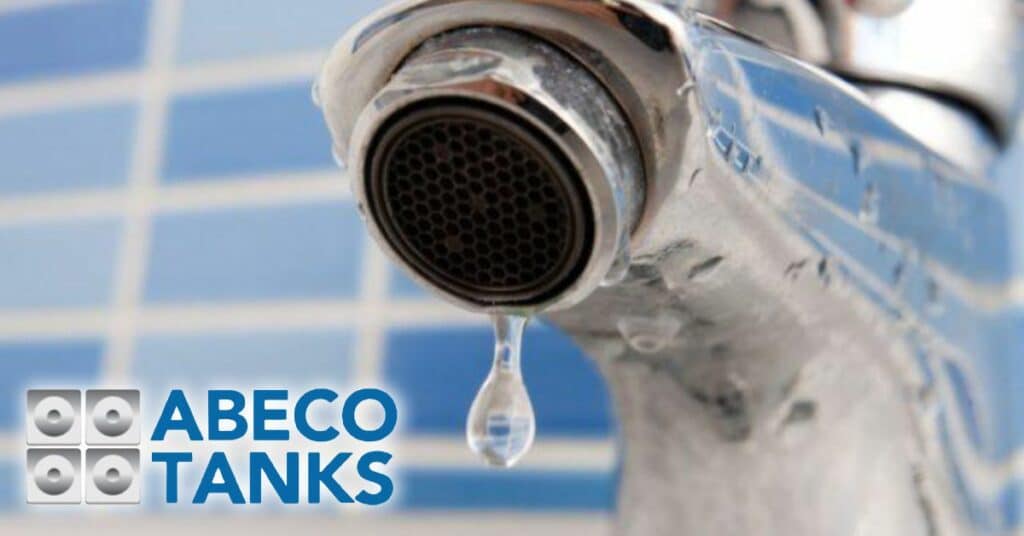01 Apr Water scarcity is the next big business challenge – #watershedding
Water scarcity is the next big business challenge – #watershedding
While the country braces itself for a year of load-shedding and Coronavirus panic sets in, there is another crisis looming: that of water scarcity. The water situation in South Africa is particularly dire, due to a number of factors including the climate, drought, an increasing population, aging infrastructure, political infighting, as well as global warming.
Mannie Jnr Ramos, COO of Abeco Tanks says, “there are signs that water scarcity is increasing.” He cites current news about water shortages in the Eastern Cape, the KZN water shutdown, water-shedding in Polokwane, water riots in the Free State, cuts in Tshwane, Mpumalanga and more.
“There is great cause for concern,” he says, “there is a crisis unfolding now and we need to be prepared.”
It is well recognised that water scarcity is not purely about the physical availability of water; social scarcity can also impact a country significantly.
Social Scarcity is the result of a lack of water investment in infrastructure or alternative technologies to draw water from water sources.
For example, the week-long riot in QwaQwa in February 2020 took place due to chronic water shortages in the Free State region.
“We can’t keep blaming weather uncertainty, drought or climate change for the water situation we are facing as a country, we must all take responsibility,” Ramos firmly believes.
And the water crisis is not unique to South Africa either, says Ramos. By 2030 over a third of the world population will be living in significant water stress, including many of the countries and regions that drive global economic growth.
This is according to the Charting our Water Future Report by the 2030 Water Resources Group, which is n collaboration of companies, Including McKinsey & Company, The International Finance Corporation (IFC), part of the World Bank Group and leading private companies from various sectors of the world economy.
“The report states that in just 20 years demand for water will far outstrip the supply; in fact, assessments show that there will be a 40% gap between demand and supply by 2030,” says Ramos.
As is with most countries, the agricultural sector in SA uses the most amount of water as can be seen in this graph below.
Farmers in the Norther Cape are suffering as their rain-fed agricultural livelihood is threatened. “Rainfall in SA has always been unpredictable and variable,” comments Ramos, “yet we are not building infrastructure with enough capacity to cope with regular dry periods. We are not implementing the right water strategies to increase supply and curb demand, which is very concerning to me.”
While South Africa is the 30th driest country in the world, according to a paper published in Nature Research in August 2019, African groundwater supplies are not yet negatively affected.
In fact, the Department of Water and Sanitation (DWS) estimates that close to 85% of the country’s groundwater aquifers are under-allocated, and there could be 4.8 km3 worth of groundwater for use in South Africa.
In addition, warmer temperatures result in increased evaporation from land surfaces: this means more intense rainstorms are expected. This means there will be more water running into South Africa’s rivers during the rainy season, which can be used to fill up dams and high capacity water storage tanks.
In addition, data shows that South Africans consume about 237 litres of water per person per day. This is well above the world average of 173 litres per day.
“We need to get smarter with our water resources,” emphasizes Ramos. “New solutions need to be put in place or the gap between demand for water, and the supply thereof, will continue to widen.”
What can businesses do to conserve water?
Water scarcity impacts businesses in every sector – from the small spaza shop, mid-sized farmer, to larger organisations.
Here are some of the top ways companies can help:
- Take active steps to decrease daily water consumption
- Educate employees and their families about water conservation
- Invest in water storage tanks to actively store municipal water, thereby ensuring water continuity
- Harvest rainwater at company buildings in a water tank and use for recycling to toilets, basins or irrigation.
- Water leaks account for 60% of wastage, get your building maintenance manager to check for any water leaks. Keep a watchful eye on your water bill for any sudden increases in consumption; check that toilets are not running constantly, or that taps are not leaking.
- Implement products which help with water efficiency – for example taps with flow restrictors, dual-flush toilets, replacing toilets to reduce the flush size.
Ramos concludes that while business and consumers can implement water conservation and continuity strategies, there are initiatives that must be implemented at a Government and Industry level.
Some of these include:
- Increase the amount of wastewater that is treated and reused
- Fix ailing wastewater treatment plants
- Develop more efficient irrigation technologies
- Grow less water-intensive crops
- Implement tiered pricing structure and incentives to reduce consumer water consumption
- Investigate infrastructure and reduce water leaks
- Use of groundwater more intensively, particularly in the agricultural sector
- Implement new technologies which have become affordable, such as desalination and renewable energy
- See our range of water storage tanks here


